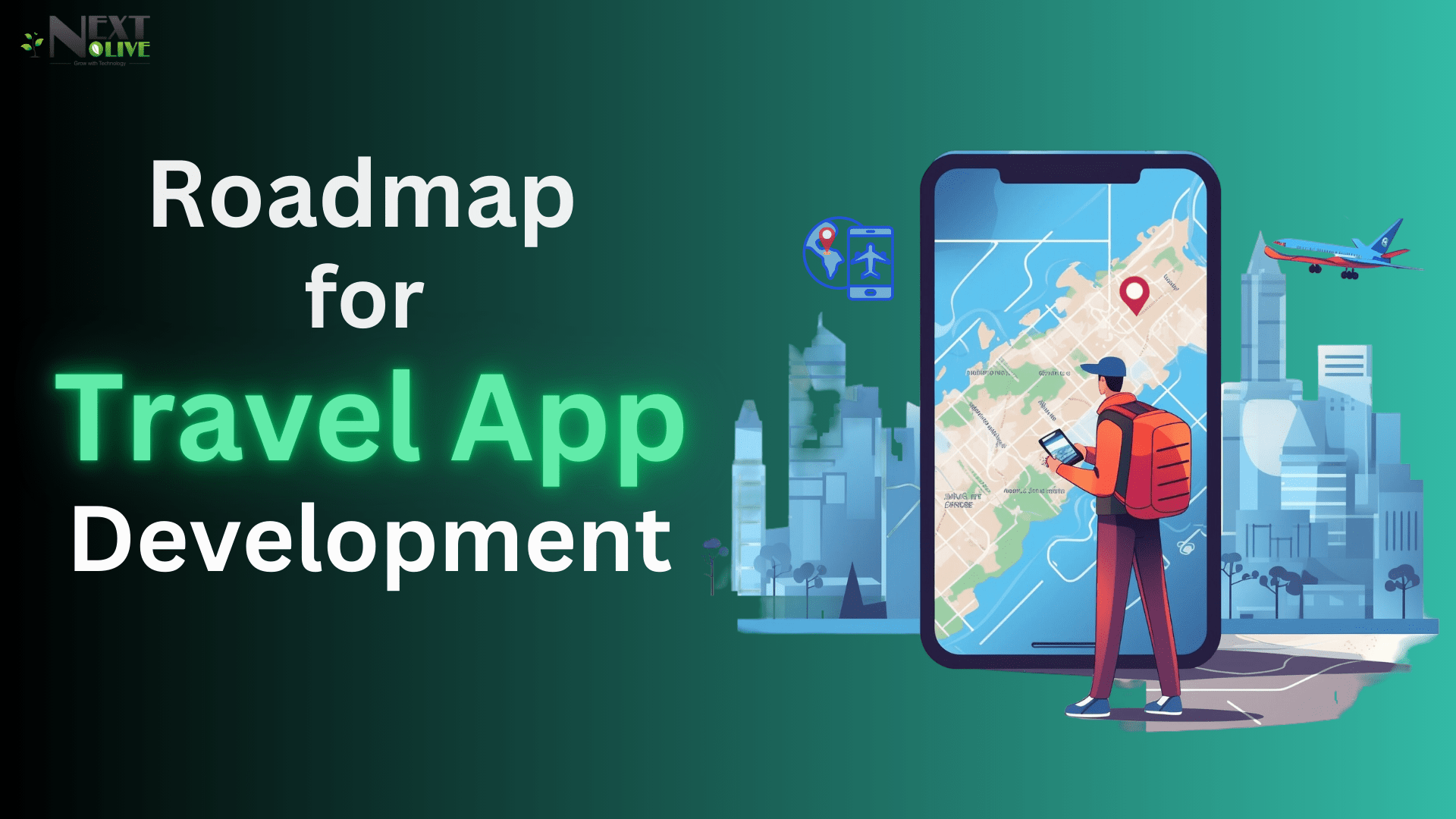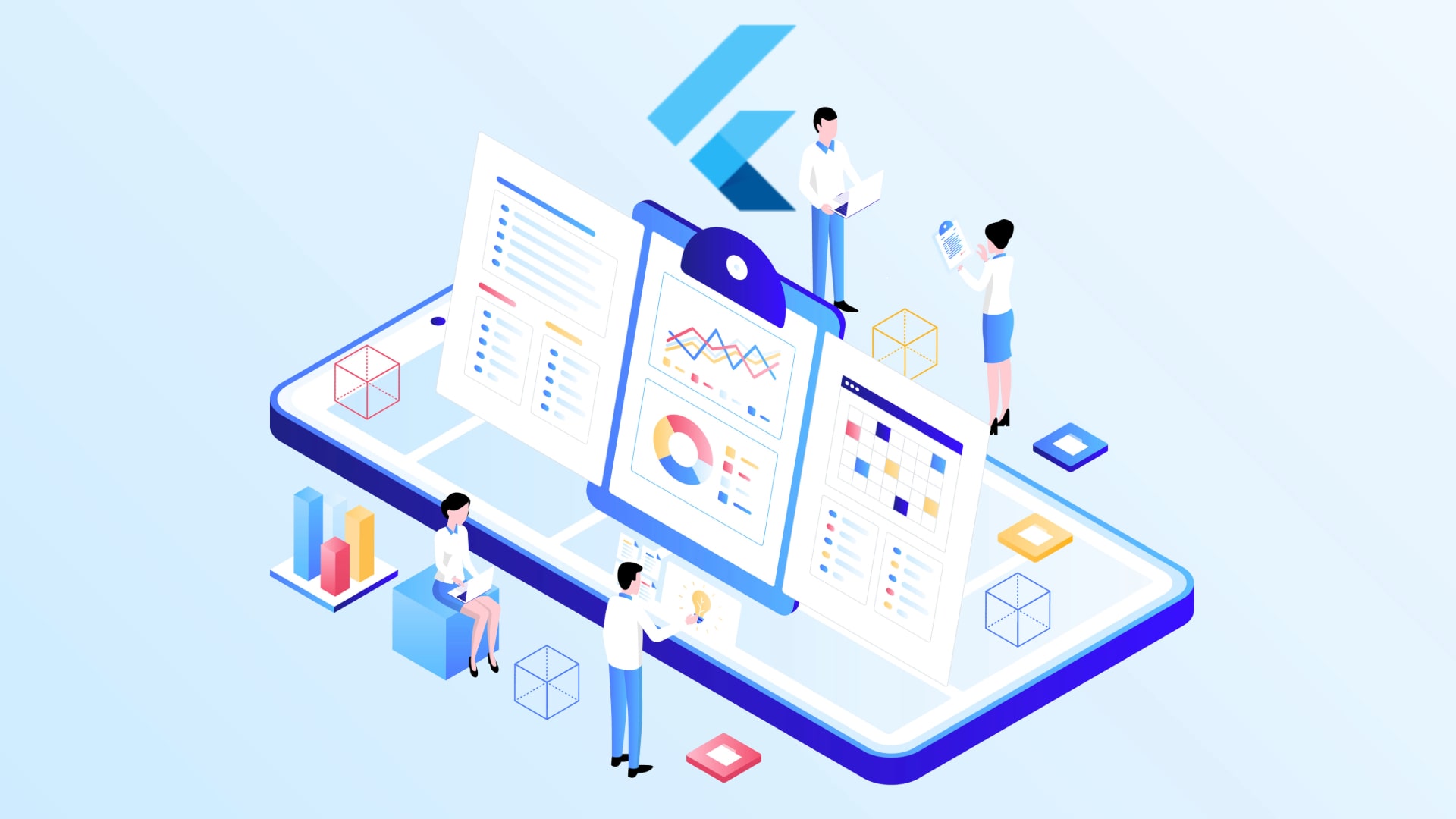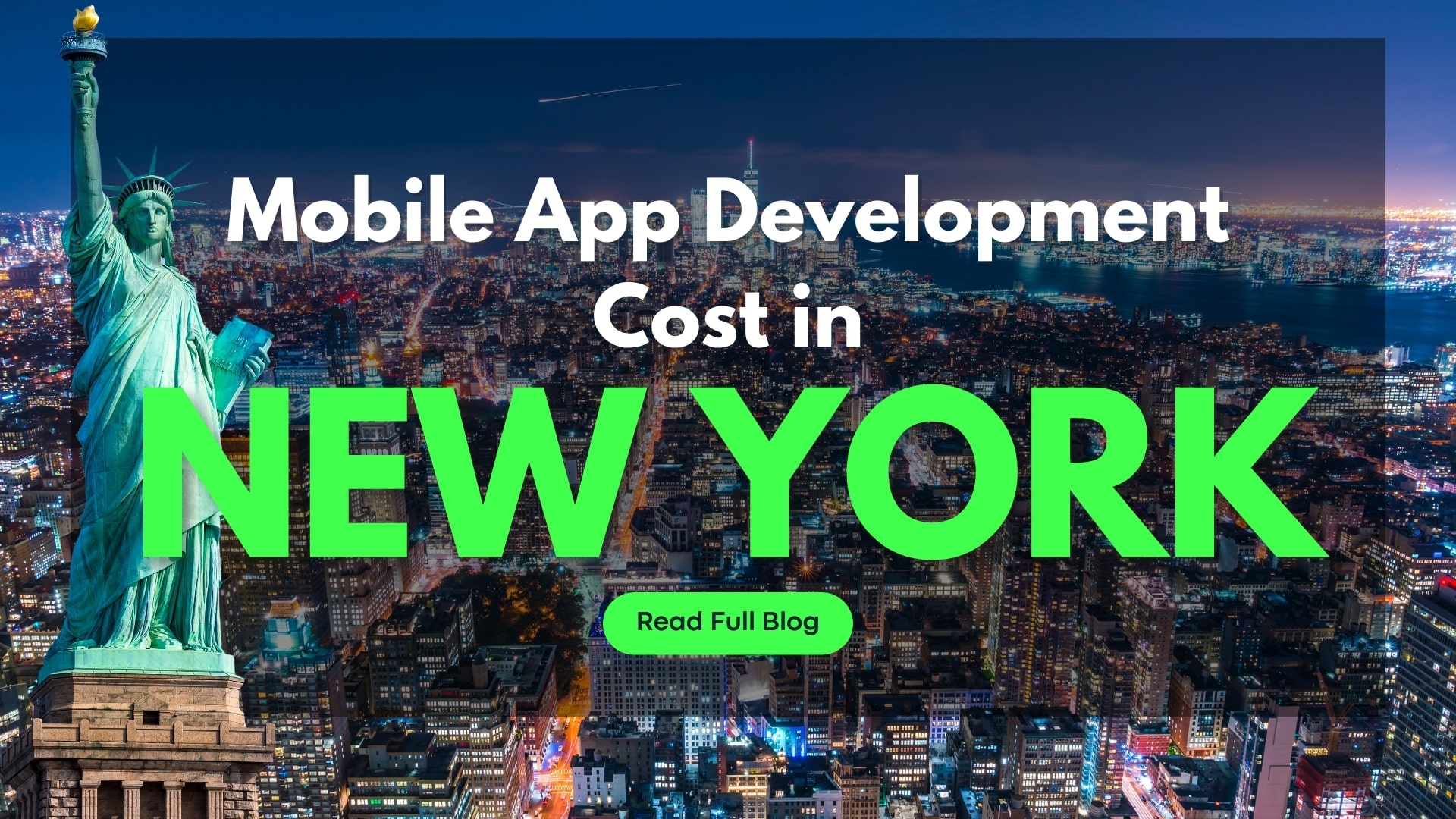Roadmap for Travel App Development: Features, Cost, and Stack
Despite the COVID-19 pandemic, the travel industry grew by approximately 4% yearly. The present size of the travel industry is US$916.00 billion and is gauged to reach US$1,114.00 billion by 2029 (according to Statista). When someone plans to travel, Mobile apps play a pivotal role in the itinerary. So, travel mobile app development and hotel app development are important pillars for travelers and tour and travel companies.
This blog provides complete information about travel mobile apps. It’s your travel app guide for future trends in the travel industry, such as Artificial Intelligence, Generative AI, Machine Learning, and AR and VR.
Table of Contents
ToggleWhat is Travel App Development?
It is the methodology of creating mobile or web apps to uplift the travel experience of travelers. Starts with booking a flight, Discovering an ideal hotel, or exploring hidden attractions in travel places, travel apps are created to make travel easier for travelers and multiple travel service providers in one place.
The roadmap for travel apps starts with understanding traveler’s needs. Then it goes to the app developer’s hand what design, and features, they can assemble but it truly depends on the client’s need. What features do they want and what features not want to assemble? then, in the technical Stage, travel apps are built using robust, reliable technologies. For iOS apps, iOS App developers might use Swift, but in Android apps, developers might use Kotlin. If want to create an app that works on multiple platforms(iOS and Android), then use frameworks like React Native or Flutter with cloud services, databases, and APIs.
After the app is developed, it will undergo testing across different devices and operating systems. The last step is continuous updates and after-development support. Next Olive’s travel app development services stand out in a crowded market.
Future Trends in Travel App Development
[1] AI Integration in Travel Apps
AI integration in travel apps has changed the industry layout by uplifting UX(User Experience) and new features. Travel app developers use AI to offer User-Based recommendations, predictive pricing, and automated customer support in tourism app development. In hotel app development, if we integrate AI features such as chatbots, booking systems, and predictive analysis, it will majorly boom in the hospitality sector.
[2] Virtual Reality and Augmented Reality
VR and AR are changing the realm of the travel industry by allowing tourists to experience and enjoy 360-degree virtual tours of travel places, hotel rooms, and amenities before booking. When developers create a hotel booking app with VR and AR features, it is additional to the travel app development cost, it will depend on the features and complexity of the requirements of the tourism app development company.
[3] Generative AI in Travel and Tourism App Development
The impact of GenAI is very deep in travel booking app development by providing personalized and next-generation experiences for travelers. In-flight booking app development, generative AI algorithms can do predictive analysis of Traveler preferences and provide suggestions by training large amounts of data. With the same data in bus booking app development, generative AI analyzes pricing and itineraries and automates the Bus booking process.
[4] Blockchain in Travel Apps
From flight ticket booking apps to hotel booking app services blockchain technology increases the translucency, security, and effectiveness of these apps. A Flutter flight booking app with Blockchain paves the way for secure transactions but in the Flutter tourism app, Blockchain algo can give decentralized assessments and Ffawless loyalty programs for enhancing the traveler’s experience.
How do Travel Apps Work?
Travel apps are digital tools that make planning, booking, and managing trips easier. They combine several features that utilize GPS technology, APIs, and real-time data to make the experience for users seamless. For example, they enable users to search and compare flights, hotels, and rental cars from various providers, providing competitive pricing and availability updates. Many apps provide customized recommendations using preferences or behaviors. For example, it provides travel itineraries, recommended places to eat, and activities near the traveler. Some have incorporated offline capability to allow people to view a map or receive confirmation of booking even without the Internet. Payment options make transactions convenient and secure as it is done through the app. Through push notifications, they offer key updates that would be vital, such as delayed flights or changes in gates. By integrating user-friendly interfaces with advanced algorithms, travel apps have revolutionized the way people explore the world, making it more efficient, affordable, and tailored to individual needs.
Types of Travel App Development
In the modern world, travel app development services are crucial for the tourism industry to adapt the modern changes. Regardless if it is a startup, travel agency, or government tourism body, Apprehending the various types of travel apps is necessary. Every travel app needs to meet every requirement of travel, from flight booking to hotel booking.
[1] Hotel Booking
Hotel booking app development services concentrate on hotel booking platforms. These apps allow travelers to discover, compare, and view previous tourists’ reviews for booking hotel rooms. The apps deliver real-time tracking, a secure payment gateway for secure payment, and real reviews, assuring that travelers can make knowledgeable judgments. Hotel booking website development cost depends on specific features such as technology, stacks, UI, UX, and integration.
[2] Flight Booking
When every traveler travels abroad or locally, their major concern is flight reservations. There are many tech stacks, but when it comes to flight booking, React Native flight booking Stacks are important for travel app development. React Native is a popular framework that permits cross-platform development, reducing timeframe and cost.
[3] Travel Itinerary Apps
Travel itinerary apps are created to help travelers to plan and organize their trips properly. Itinerary apps can make a calendar, cost calculation, budget management, reminders, and event planning for trips. But if the app development company uses React Native in the development phase then apps can run smoothly on both operating systems (iOS and Android).
[4] Transport and Cab Booking App Development
Transport and cab booking apps change the traveler’s transportation experience from one city to another. In today’s world, travel and hospitality app development is vital for every travel lover. Here are some key features of transportation apps: tracking, secure payment, and easy navigation. Transport services like OLA, Uber, and Redbus are the giants in this industry, with top-notch features and excellent customer support.
[5] Live Tracking Travel App Development
Live-tracking travel apps require expertness in application development services and exact insight into the traveler’s needs. From real-time tracking apps, travelers can monitor live tracking of cars, buses, luggage tracking, flights, or trains, and travel app development cost depends on aspects like platform choice, features, coding complexity, and UI design.
[6] Comprehensive Travel and Hospitality App Development
Travel and hospitality app development is the umbrella term. It covers every aspect of travel from hotel booking to flight booking. Developing these types of apps requires years of experience, and excellency in complex coding patterns. Trivago, MakeMyTrip, and Booking.com come under that category.
Features of Travel Apps
[1] Essential Features
Flight and Hotel Booking: Easily search, compare, and book flights and hotels with integrated payment gateways.
Itinerary Management: Create and manage your trip plans, including activities, sightseeing, and bookings.
Real-time Notifications: Get updates on flight status, check-in reminders, and weather alerts.
Offline Access: Access your itinerary, maps, and essential info without an internet connection.
Maps and Navigation: Integrated maps with navigation support to explore new places easily.
[2] Good-to-Have Features
Currency Converter: Real-time currency exchange rates to help you budget your expenses.
Language Translation: Instant translation of text and speech to communicate effortlessly.
Local Guides: Recommendations and reviews for restaurants, attractions, and activities.
Expense Tracker: Keep track of your travel expenses and split costs with travel companions.
Social Sharing: Share your travel experiences and photos with friends and family.
[3] Advanced Features
AI-based Recommendations: Personalized suggestions for destinations, activities, and dining based on your preferences.
Augmented Reality (AR) Navigation: Use AR to find your way around with interactive maps and guides.
Virtual Tours: Explore destinations virtually before you visit.
Travel Insurance Integration: Buy travel insurance directly from the app.
Loyalty Programs: Earn and redeem points for flights, hotels, and other services.
Travel App Development Process
[1] Market Research and Planning
The travel app development stage begins with rigorous market research and strategic planning. This is crucial for understanding what target users expect to find in their travel apps and analyzing competitors; it also serves as a discovery of market trends. It collects insights about traveler needs, preferences, and pain points to devise a solution. Careful planning sets the app’s foundation – defining the business model, how to monetize, and how to scope it. By aligning the app’s vision with market demands, developers can ensure a user-centric approach and a competitive edge.
[2] Define Features and Functionalities
Defining the features and functionalities of a travel app is the most important step in making it usable and appealing. Developers and stakeholders identify the essential features, such as booking systems, itineraries, real-time updates, and personalized recommendations. More advanced options, such as AI-driven suggestions, virtual tours, and integration with local services, can make the user experience better. The objective is to find a balance between must-have features and innovative elements that will meet the expectations of users while keeping the app intuitive and efficient.
[3] Design
The design phase mainly deals with intuitive and aesthetically pleasing UI and UX. Designers prepare wireframes and prototypes to make the structure and flow of the app clear. Branding, color schemes, typography, and navigation of the app are looked after so that the overall look and feel are coherent and friendly to users. A smooth design process would ensure that a user could browse through all features of the app without being disengaged by the interaction.
[4] Development
The development stage takes the app’s concept to life by coding and building its back-end and front-end systems using modern technologies and frameworks while making the app scalable and secure. APIs for booking flights, reserving hotels, or payment gateways might be integrated to ensure that the app is functional. Agile methodologies are often used, allowing for iterative progress in the development process to be addressed and feedback incorporated quickly.
[5] Testing
Testing is an integral part of checking bugs, cross-platform compatibility, and validation in terms of application performance under a variety of test scenarios. Among the different methods of testing- functionality, usability, performance, and security the final result should match high-quality benchmarks. Real-life testing with beta users can reveal much about refining the app to deliver a seamless experience.
[6] Deployment
Once the app goes through all these testing phases, it is all set for deployment. This procedure includes launching it on platforms such as the Google Play Store or Apple App Store. For this, all the guidelines of respective platforms are adhered to by optimizing the application’s visibility and preparing an appropriate marketing plan to drive more downloads. Then, a perfect deployment ensures it is available to the users without any issues.
[7] Post-Launch Maintenance
Deployment does not mark the journey’s end; post-launch activities are equally important. This includes monitoring user feedback, analyzing the app’s performance, and providing regular updates to fix bugs or add new features. Continuous marketing efforts and customer support help retain users and grow the app’s audience. Long-term success requires engagement and the evolution of the app according to user needs.
Tech Stack for Travel App Development
Frontend
- React Native
- Flutter
- Swift
- Kotlin
Backend
- Node.js
- Django
- Ruby on Rails
Database
- MongoDB
- PostgreSQL
- Firebase
APIs & Services
- Google Maps API
- OpenWeatherMap API
- Stripe
- Twilio
Cloud Services
- AWS
- Google Cloud Platform
- Azure
Version Control
- Git
- GitHub
DevOps Tools
- Docker
- Jenkins
- Ansible
Cost to Develop a Travel App
The cost of developing a travel app depends on its complexity, features, and the development team. Let’s see the cost breakdown:
[1] Features and Complexity
- Basic App: $20,000 – $50,000 (simple booking and payment features).
- Moderate App: $50,000 – $100,000 (reviews, notifications, advanced filters).
- Advanced App: $100,000 – $300,000+ (AI/ML, AR/VR, multi-language).
[2] Platform Choice
iOS, Android, or cross-platform options like Flutter affect costs.
[3] Team Type
Freelancers (low cost), in-house teams (high cost), or agencies (mid to high cost depending on location).
[4] Key Cost Factors
UI/UX design, backend development, third-party APIs, and maintenance.
Cost Optimization Tips
- Start with a Minimum Viable Product (MVP).
- Use pre-built APIs.
- Consider outsourcing to cost-effective regions.
Monetization Techniques of Travel Applications
[1] Commission-Based Model
Travel apps earn a percentage of each booking made through the platform. For example, hotels or airlines share a fixed commission for reservations. This approach provides steady income and offers added convenience to users.
[2] Subscription Plans
Offer users premium features like ad-free experiences or priority booking for a monthly fee. Tiered memberships can include VIP services or exclusive discounts. This model provides predictable, recurring revenue.
[3] Freemium Model
Provide basic app features for free, with advanced options as paid upgrades. For instance, offline maps or custom itinerary planning can be locked behind a paywall. Users can explore first and pay for added benefits.
[4] Advertising
Integrate banner, video, or native ads relevant to users’ travel preferences. Offer rewards, like discounts, for engaging with ads. Ensure ads are non-intrusive to maintain user satisfaction.
[5] Affiliate Marketing
Promote third-party services like travel insurance or tours within the app. Earn a commission for every sale or booking made via referral links. This enhances revenue while offering value-added services.
[6] In-App Purchases
Sell travel guides, exclusive experiences, or personalized itineraries within the app. Offer virtual tours or AR content as premium add-ons. Users pay for content that enhances their travel planning.
[7] Partnerships and Collaboration
Collaborate with airlines or hotels to integrate services and loyalty points. Partner with payment providers to offer cashback on bookings. These partnerships create mutual benefits and boost revenue.
[8] Content Marketing and Sponsorships
Create travel blogs, videos, or guides sponsored by tourism boards or brands. Feature sponsored content like “Top 10 Destinations” posts. Engaging content attracts sponsorships and monetizes user attention.
[9] Loyalty Programs
Reward users with points for every booking made through the app. Points can be redeemed for discounts, free services, or upgrades. This builds customer loyalty and encourages repeat use.
[10] User-Generated Content Monetization
Encourage users to share travel stories, photos, or itineraries on the app. Feature premium user content for a fee or include affiliate links. Leverage this content for organic community growth and revenue.
Selecting the best Travel App Development Company for your Travel App Development Project.
Selecting the proper travel app development company will, therefore make the dream become reality and achieve the desired success for any application. Among all those travel app development company leaders, one finds Next Olive Technologies outplays all its competitors with excellence. The company has 12+ years of experience, with 150+ skilled travel app developers and a proven track record of delivering more than 50 solutions across 20+ countries. Next Olive Technologies stands out with its customer-centric approach and cutting-edge technologies such as AI, AR, and seamless integrations in perfect sync with travel industry trends. Their solutions are designed to improve user experience, increase engagement, and optimize operational efficiency. Unlike most competitors, Next Olive focuses on long-term partnerships, providing dedicated post-launch support and scalability to help your app evolve with market demands. When you choose Next Olive, you’re not just hiring a developer, you’re gaining a partner invested in your success.
Conclusion
In conclusion, building a travel app is a process that requires multifaceted innovation, user-centric design, and strategic planning. By focusing on core features like seamless booking, personalized recommendations, real-time updates, and easy navigation, you can create a platform that serves the needs of modern travelers. Further integration of advanced technologies such as AI and AR will further improve the user experience, giving your app a competitive edge in the market. Remember to integrate scalability, security, and customer feedback in every stage of the development cycle to ensure continuous improvement and relevance. A clear vision, commitment, and working to excellence will turn your travel app into a trusted friend for those who explore the world.








